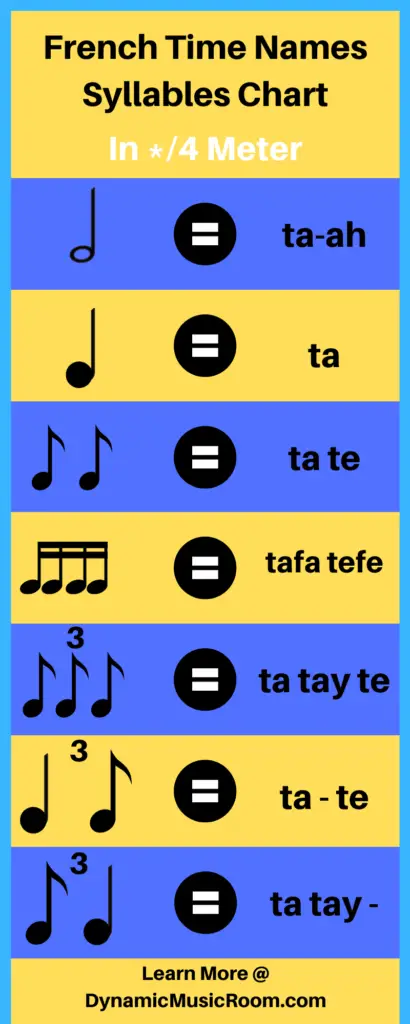As I was looking into Dalcroze courses, something occurred to me. I know the system traditionally uses fixed do, but what are the Dalcroze rhythm syllables? I did some research and asked around to people with training, and here’s what I found.
The Dalcroze rhythm syllables aren’t set in stone, although Dalcroze himself encouraged a mnemonic approach (word association). It’s also common to see Dalcroze educators using the French Time Names syllables.
Read on for a brief explanation of these systems.
Table of Contents
2 Common Rhythm Syllables Used By Dalcroze Teachers
Dalcroze himself didn’t advocate for specific rhythm syllables, but he did encourage a word-association system. Tammy Renee Fust found in her research that many Dalcroze educators today will also use the French Time Name system.
In this section, I’ll briefly go into these two approaches.
Mnemonic Approach
The mnemonic approach may be commonly known as a word association system. This is similar to how Orff approaches rhythm syllables.
In the mnemonic system, rhythms are given words whose syllables and cadence match the feeling of the rhythm itself. This aligns with the general Dalcroze goals of connecting musicians with the feeling of the music.
For example, a quarter note would be given a single syllable word that’s normal to say fairly short (such as “walk” or “Bob”). A half note would be given a single syllable word that’s normal to stay longer (such as “moo” or “slide”).
Paired eighth notes could be given a two-syllable word such as “running” or “wiggle”.
Though the Kodaly counting system uses other specific syllables, it’s common for Kodaly-inspired teachers to use the mnemonic approach as a tool for preparing the concept.
French Time Names
French time-names are a product of music education learning in 19th century France. The system originally used specific syllables to replace note values (like the ta ti ti system).
In its original form, the syllables used were the French words for the rhythms which is where the “time names” comes from.
The father of American music education, Lowell Mason, changed this system to fit his late 19th-century music classrooms. He chose syllables he thought would be easier to say for English speakers.
It’s at this point, the syllables also changed to become a beat-function system. This means the “ta” would always be where the beat landed.
For more on beat function systems, check out the takadimi system or the Gordon rhythm syllables.
Mason used the following syllables:

Frequently Asked Questions
In this section, I’ll answer some common questions associated with Dalcroze rhythm syllables.
What is a rhythm syllable? – A rhythm syllable is a word or sound associated with rhythmic values to help students and musicians develop better reading and performing.
What is Dalcroze theory? – Commonly known as Dalcroze Eurhythmics, this method seeks to improve students’ appreciation, aural understanding, improvisation, and expressive connection to music.
The main tool of this method is the body which is connected to all learning activities in Dalcroze. Read more at the Alliance For Active Music Making.
What are the 3 components of the Dalcroze approach? – The 3 components of the Dalcroze approach are:
- Rhythmic solfege (as discussed in this article and using fixed do for pitch)
- Improvisation (developing fluency with musical language)
- Eurhythmics (body movement to develop expression of music beyond notes and rhythms)
Conclusion
Now you a little more about Dalcroze rhythm syllables. Syllables combined with the movement instruction of Dalcroze eurhythmics will give your students great fluency with rhythm.
Did any of this surprise you? Let us know below.


